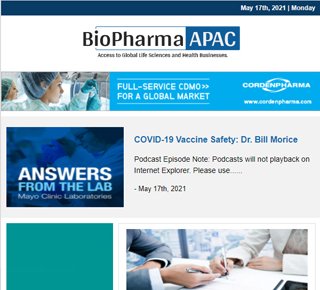Gilead and Kite Oncology Announce Cost-Effectiveness of Yescarta® in Large B-Cell Lymphoma in Singapore
14 June 2024 | Friday | News

Image Source : Public Domain
Gilead and Kite Oncology announced new data from analyses of Yescarta® (axicabtagene ciloleucel), demonstrating its cost-effectiveness and budget impact compared to the current Standard of Care (SOC) in patients with large B-cell lymphoma (LBCL) who are refractory to or relapse within 12 months of first-line chemoimmunotherapy. These findings were presented at the European Hematology Association (EHA) meeting.
The analyses revealed several key points:
-
Quality Adjusted Life Years (QALYs) and Costs: In the base-case analysis over a lifetime horizon, Yescarta-treated patients generated 8.24 discounted QALYs, compared to 6.52 QALYs for SOC patients, resulting in an incremental QALY gain of 1.72.
-
Incremental Cost-Effectiveness Ratio (ICER): Compared to SOC, Yescarta demonstrated an ICER of S$75,910 (US$55,534) per QALY gained. This is below 1× GDP per capita of Singapore (S$113,779 [US$83,238] in 2023). According to the World Health Organization, a treatment strategy is considered highly cost-effective if the ICER is below 1× GDP per capita.
-
Budget Impact: Introducing Yescarta to Singapore’s public healthcare system for second-line LBCL is expected to increase the annual budget impact by approximately 17%, from S$21.7 million (US$15.9 million) without Yescarta to S$25.4 million (US$18.6 million) with Yescarta in Year 5, during which peak usage is expected. This increase is mitigated by a reduction in subsequent treatment-related costs by S$9.3 million/year (US$6.8 million/year), from S$17.1 million/year (US$12.5 million/year) to S$7.8 million/year (US$5.7 million/year) in Year 5.
Diego Santoro, General Manager of the Intercontinental Region at Kite, commented on the significance of these findings: “The analyses demonstrate the cost-effectiveness of Yescarta in second-line treatment from the perspective of Singapore’s public healthcare system compared to bone marrow transplant. This marks an important step towards providing patients in Singapore with the option of CAR T-cell therapy earlier in their treatment journey, allowing for a more cost-effective allocation of resources and a manageable budget impact.”
The standard of care (SOC) for treating DLBCL patients has historically involved a multi-step process that starts with chemoimmunotherapy, followed by high-dose chemotherapy (HDT), and culminates with a stem cell transplant (ASCT). While approximately 60% of newly diagnosed LBCL patients respond to initial chemotherapy, about 40% will relapse or not respond, necessitating second-line treatment
Most Read
- How Health Systems Are Reshaping Drug Adoption, Partner Models, and Market Access in 2026
- Top 25 Biotech Innovations Redefining Health And Planet In 2025
- The New AI Gold Rush: Western Pharma’s Billion-Dollar Bet on Chinese Biotech
- Top 25 Biotech & Biopharma Leaders in Sustainable Innovation, 2025
- China’s Biopharma Dealmaking Surges in H1 2025, Driven by Record Licensing and Oncology Focus
- Chikungunya in China: How a “Forgotten” Arbovirus Found the Perfect Storm
- How Innovation Gaps in Biopharma Raise New Safety Concerns
- Smart Implants and the Future of Musculoskeletal Injury Treatment
- How Ethical Gaps in Psychiatry Could Undermine Biopharma Progress
- The Evolving Landscape of Women’s Health Innovation in the Asia-Pacific
- Using NLP-Driven Decision Support in Emergency Health Assistance
- Taiwan Steps Into the Global Spotlight With a New Cancer Therapy
- The Role of Unique Device Identification (UDI) in Tracing Medical Device Safety
- The Importance of a Patient’s Mental Health During Clinical Trials
Bio Jobs
- The State of Biotech and Life Science Jobs in Asia Pacific – 2025
- Avantor’s New CEO Ligner Aims to Unlock Global Potential and Deliver Shareholder Value
- AstraZeneca Commits $50 Billion to U.S. Expansion by 2030 in Biggest-Ever Global Investment
- Thermo Fisher, SAMRC, and South Africa’s Department of Science and Innovation Launch CATIR to Nurture Next-Gen Scientists
- Cube Biotech Appoints Former Sartorius CEO Dr. Joachim Kreuzburg to Board of Directors
- FDA’s AI Transition Marks a Turning Point in Drug Review: Industry Faces Pressure to Adapt Amid 20% Workforce Cut
- WuXi XDC Completes Mechanical Build of Singapore Bioconjugate Manufacturing Hub
News
Editor Picks











